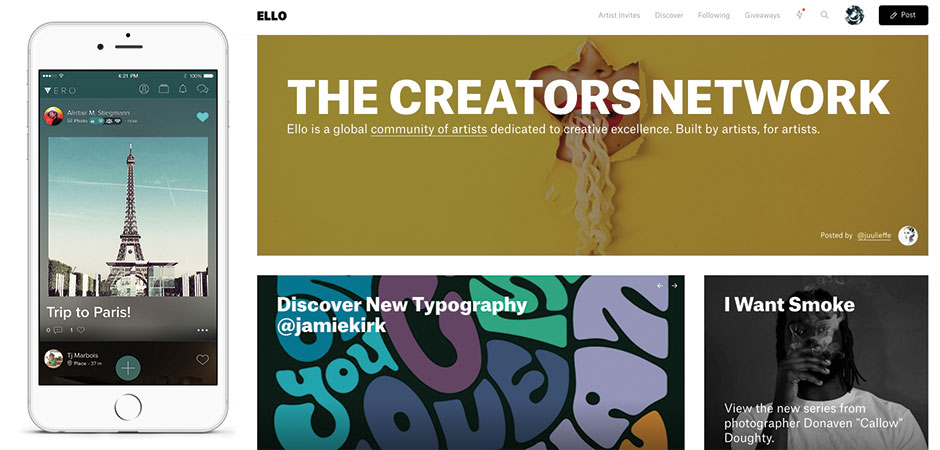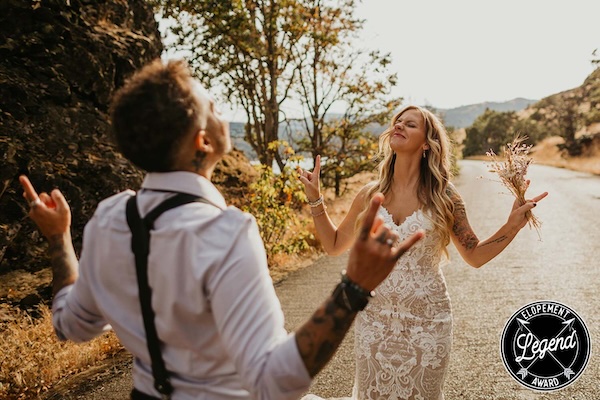Industry News
You know the old saying, “You can’t please all of the people all of the time”? With more than one billion people using its various products, Facebook has almost all of the people, and many of them are far from pleased. Between Facebook’s politically charged data mining scandal and Instagram’s controversial switch to an algorithmically sorted, ad-clogged timeline, photographers may be casting around for alternative networks to share and promote their work and to find the work of others.
The good news is that those other networks exist, and while they’re nowhere near as large or as popular as social networking behemoths, they do have their virtues. Ello, which debuted in 2014, and Vero, which launched in 2015, both hold a similar promise: to right the perceived wrongs of Facebook and Instagram. Here’s what you need to know about these networks.
The Timeline Rules
Instagram’s switch to an algorithmically sorted timeline from a chronological one sparked outcry among photographers as they saw engagement with their posts drop. While Instagram has hinted that it may be rethinking this position, both Ello and Vero adhere to chronological feeds and won’t hide posts from you like Facebook or Instagram does. California-based photographer and cinematographer Ben Staley, who joined Ello in 2014, says this is one of the network’s major selling points. “It’s nice to not feel like there’s an algorithm to force you to look at certain things.”
Photographer Samuel Zeller also jumped on Ello back in 2014 but canceled his account because, in his mind, the “product wasn’t ready yet.” In January 2018, after being “fed up with the evolution of Instagram—the new algorithms, the whole shadow banning thing and the large amounts of ads”—he rejoined. “I realized that the project was much more mature and shifted towards [becoming] a network for creatives, and that’s what I instantly loved.”
The lack of an algorithm isn’t always a plus, though, as it can be difficult to find photographers and other accounts to follow, cautions Ontario wedding photographer and Vero user Phillipa Maitland. “It’s hard to find people, and I see a lot of stuff [on Vero] that I’m not interested in,” she says.

Like Instagram, Vero only lets you post content via its mobile app. The universe of desktop workarounds and third-party publishing services, though, are not as prevalent.
Free of Ads
You’re unlikely to see the CEO of either Ello or Vero facing the withering scrutiny of a Congressional panel about their industrial-scale data mining. Both services are free of ads and, consequently, free of the intrusive digital surveillance that Facebook and Instagram employ to make you, the user, more attractive to prospective advertisers.
That doesn’t mean they’re completely free of commercialism. Vero does allow brand pages and lets companies link out to external sites and embed “buy now” buttons on their posts. Vero also plans to start charging users a subscription fee to use the platform, though for now, it’s free to join (and will remain free for those already signed up). For its part, Ello is free to use and is seeking to make money by linking ad agencies with creatives.
While the lack of ads may lead to a cleaner, less intrusive user experience, it’s not without its pitfalls. For one thing, you can’t leverage either network to promote your photography business or boost posts as you can on Facebook or Instagram. The same digital tracking tools that can make Facebook feel creepy also make it an effective marketing tool in ways that Vero and Ello don’t replicate.
Small Reach
There’s no escaping the fact that both Ello and Vero lack the “network effect” that makes Instagram and Facebook so powerful. Simply put, they just don’t have enough users to give your work major visibility. Public reports peg Ello’s network at around 625,000 users while Vero has around 3 million users, according to Barron’s.
Few users mean fewer businesses and prospective clients are active on both platforms, too. While Staley and Maitland have both been solicited for work through Instagram, neither have gained work through Ello or Vero.
“I jumped on thinking I’d get crazy amounts of followers,” Maitland says of Vero. “But it’s just like any other platform. You have to really work at it. I’ve had followers trickle in here and there. It’s a little disappointing.”
A Different User Experience
Vero and Ello approach posting images in a slightly different manner than Instagram, but there are some commonalities. There are hashtags, #ofcourse. And both services seek out and promote the posts of featured users, including photographers. You can like, comment and, on Ello, easily repost posts you like. You can message users and receive notifications when people interact with your content.
The differences are also notable. On Ello, you can post from both your desktop and a mobile device—unlike Instagram, which makes it tortuous to post from a desktop. On Vero, you can only add content through the mobile app, not a desktop. Both Vero and Ello support adding links to posts, which Instagram only permits for business users. The interfaces are also different. Ello’s layout is clean, light and minimalistic. Vero is dark.
On Ello, everything you share is visible to all your followers; on Vero, you have the ability to share posts more discretely. Vero has four different categories of followers: close friends, friends, acquaintances and followers. When you post, you’ll be able to determine who gets to see what (much like Google+, if anyone remembers that).
On the other hand, both Ello and Vero lack the kind of integration with third-party publishing services, like Plannily, that Maitland uses to schedule Instagram posts. That makes using Vero “very time- consuming,” she says. “That said, I do like the fact that if I post very quickly, I don’t have to adjust the size of the image on Vero. With Instagram, there’s often a crop,” she says.
“Vero is my favorite app experience,” Staley adds. “You can zoom into pictures a lot. You can put in links, [highlight] movies and music, and it’s all very intuitive.”
Zeller enjoys being able to upload higher quality images of any aspect ratio on Ello. “There’s also the possibility to combine multiple images into one post and insert text between them. That’s great for storytelling.”
A Different Community
When Ello debuted, it was touted as a “Facebook killer”—a reputation the company has sought to distance itself from. Instead, it’s focused on being a showcase for artists. You’re far more likely to see works of abstract art—photographic or otherwise—poems and prose than photos of someone’s lunch or cat (full disclosure, we’re fans of both lunch and cats).
Zeller says Ello’s focus is one of the things he loves about it. “I love the community on Ello—there are sculptors, illustrators, designers, architects, photographers, writers, musicians and so on. It feels like I’m with people that understand my work more, especially the fine- art and abstract photography.”
Staley agrees. “I think there’s more high-quality art on there and less selfies. It’s more about the work.”
Vero, though, is more general in its appeal. You’re as likely to find high-quality photography as you will selfies, cat and lunch memes and non-artistic nudity. In fact, Maitland says she’s had a hard time finding nearby photographers and work she’s interested in on the platform.
It seems unlikely that either Ello or Vero will attract anything close to the user base of Instagram or Facebook, but for Staley, that’s not the point. “Social networks are important in ways that are not important to the work. They’re important to brands, that’s why people spend money on bot followers. It’s become a shell game.”
Zeller has a similar take: “The importance of social media in society is growing and it will keep growing. But I feel that it’s becoming less important for photographers. The number of photographers on social media is increasing at an exponential rate and that means as an admirer of photography, you just can’t keep up.”
Ben Staley
Los Angeles, CA
benstaley.com
Samuel Zeller
Geneva, Switzerland
samuelzeller.ch
Phillipa Maitland
Ontario, Canada
phillipa.ca
Related: Five Photography Trends to Watch in 2018
What You Need To Know To Win at Social Video
7 Facebook Mistakes You Don’t Want to Make








